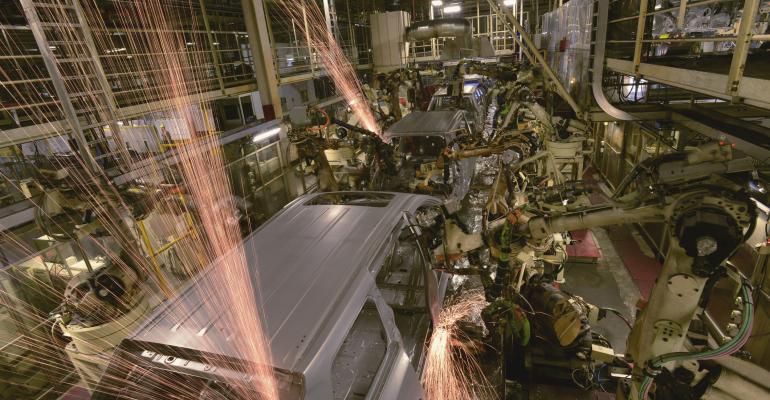DALLAS – Production improves in 2023, but the new-vehicle inventory shortage persists, and it could take several more years for annual U.S. light-vehicle sales to return to the 17 million level reached before the pandemic, according to experts at the Auto Team America Dealer/CEO/CFO Forum held in conjunction with the 2023 NADA Show here.
“It’s possible that within 5 years, we may still not get back to 17 million,” says Jonathan Smoke (pictured, below left), Cox Automotive chief economist. “In the near term, I’m doubtful whether we can produce 15 million this year.”
 The latest 2023 U.S. light-vehicle sales forecast from Cox Automotive is for around 14.1 million, only a small improvement vs. 13.7 million in 2022 – and with nearly all the increase in fleet sales.
The latest 2023 U.S. light-vehicle sales forecast from Cox Automotive is for around 14.1 million, only a small improvement vs. 13.7 million in 2022 – and with nearly all the increase in fleet sales.
Panelists offer three reasons why increases in new-vehicle production may be slow, even though the availability of semiconductor chips is improving.
1. Short supplies mean high average transaction prices and low incentives can continue. The OEMs like it that way, says John Murphy, managing director and lead U.S. automotive analyst at Bank of America.
“As long as they’re putting up record profits, they’re not going to kill themselves straightening out the supply chain,” he says.
2. There are more problems in the industry supply chain than just computer chips. Murphy says industry sources in other sectors tell him, “Thank God semiconductors are the problem, because if it wasn’t them, it would be us” in the hot seat.
Fixing supply-chain problems is like a game of “whack-a-mole,” says Tom Doll, president and CEO of Subaru of America, referring to the whole industry, not just Subaru. Some automakers have reported problems with wiring harnesses, for instance. “It’s one thing after another,” Doll says.
3. Talk of a looming recession is turning automakers, and many consumers, conservative. “Every recession we’ve had, production has pulled back. Why should this one be any different?” says Smoke.
Instead of starting a price war to sustain production increases, “It’s possible we’ll see them pull back,” Smoke says of the OEMs. “If I were in their shoes, I’d rather sell 13.7 million vs. 15 million with the same incentives I had back in 2019.”





